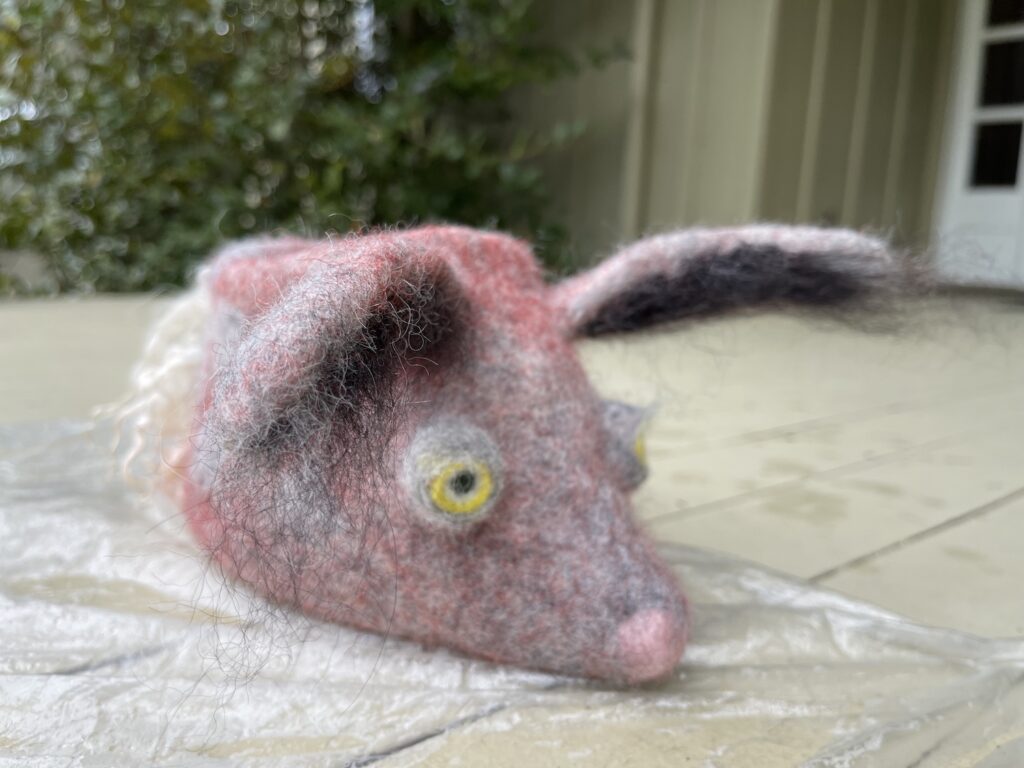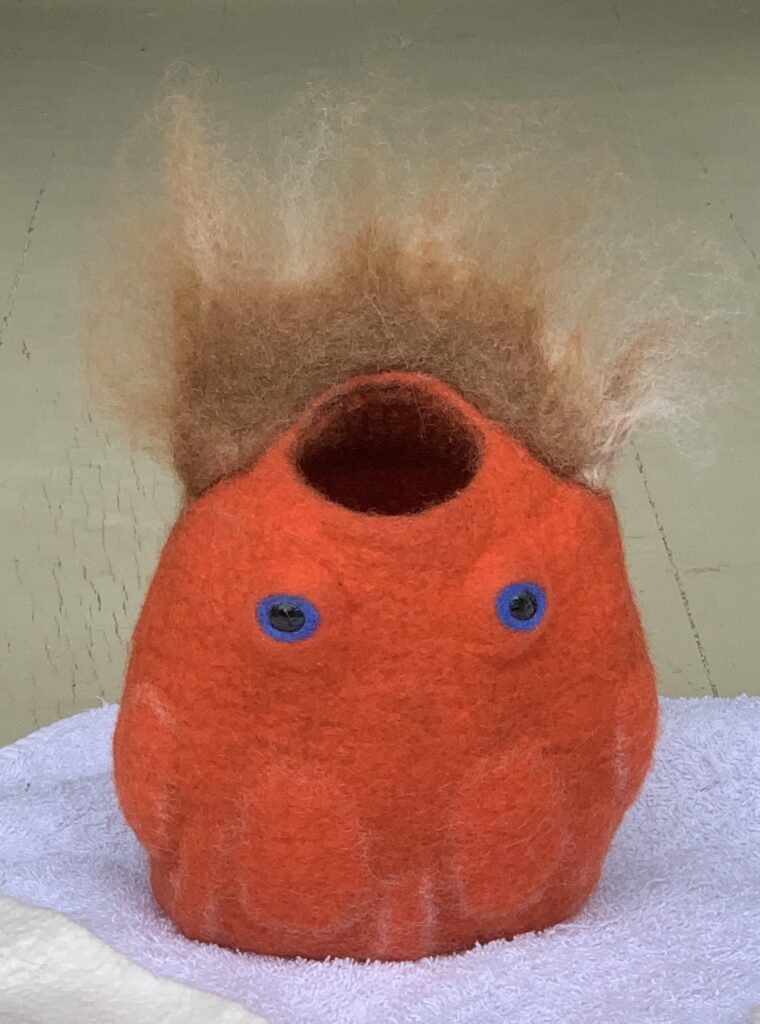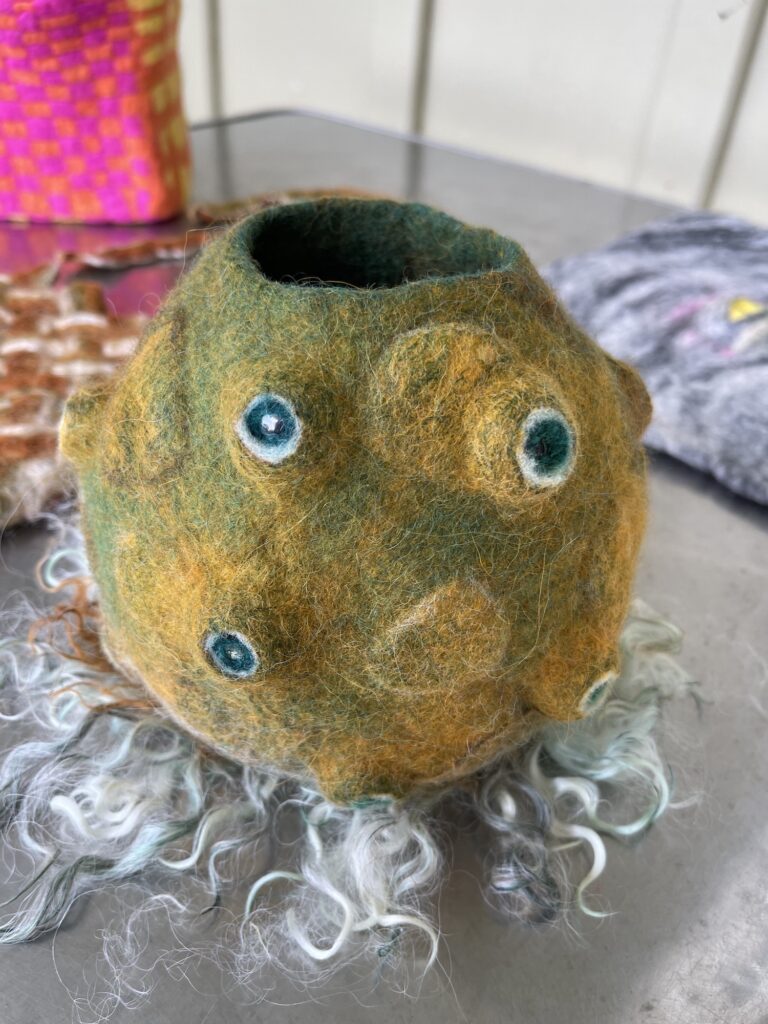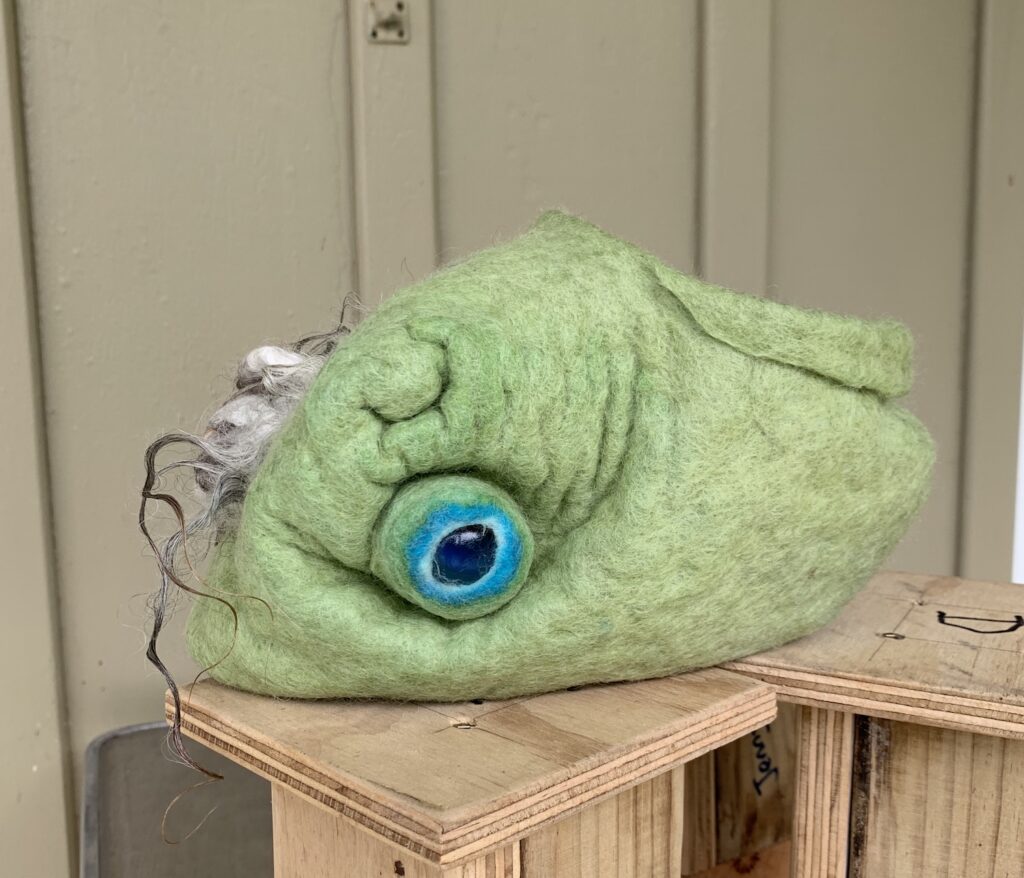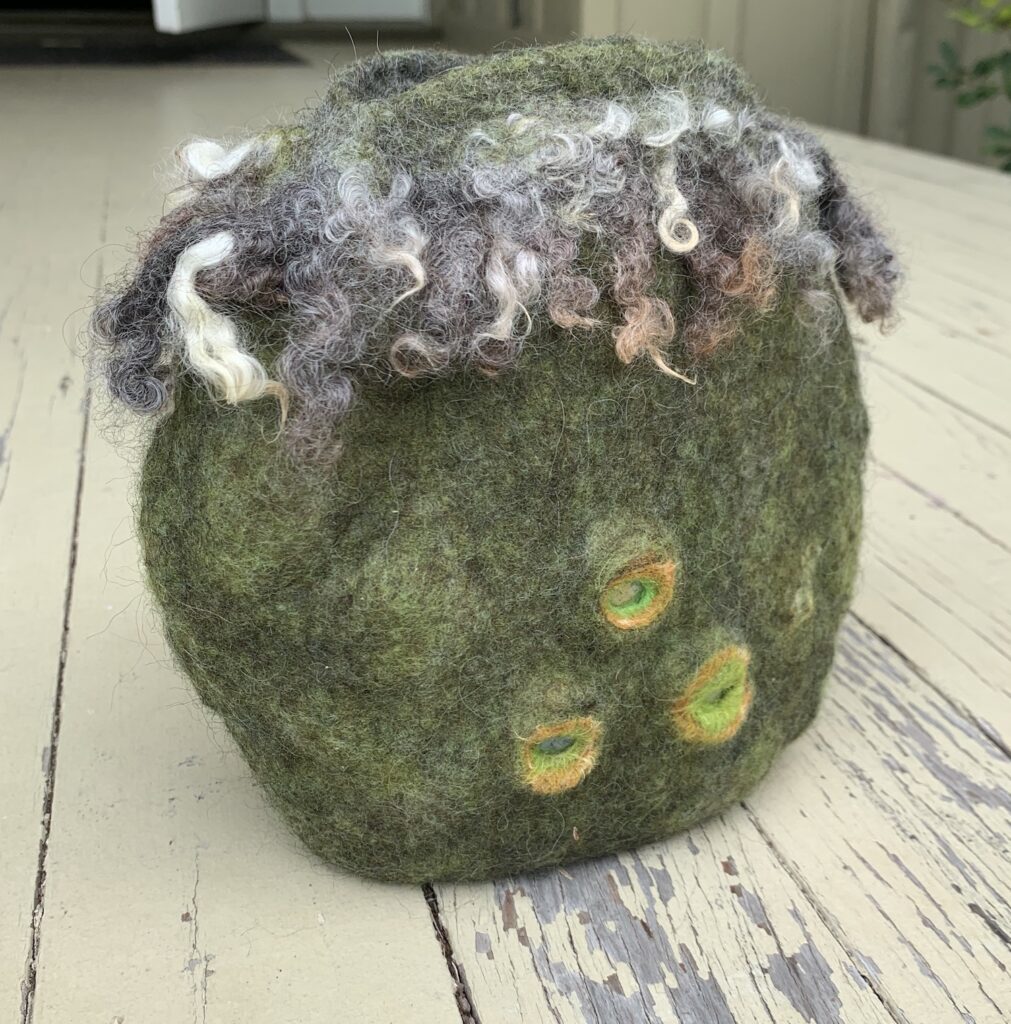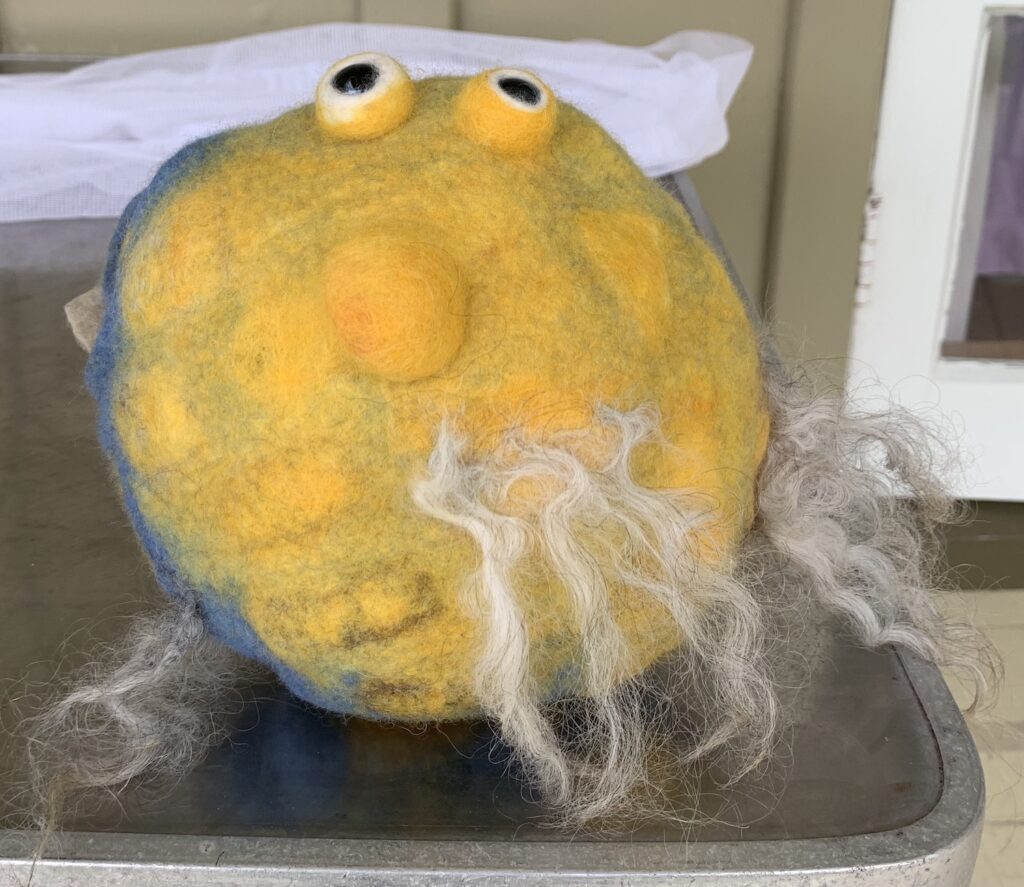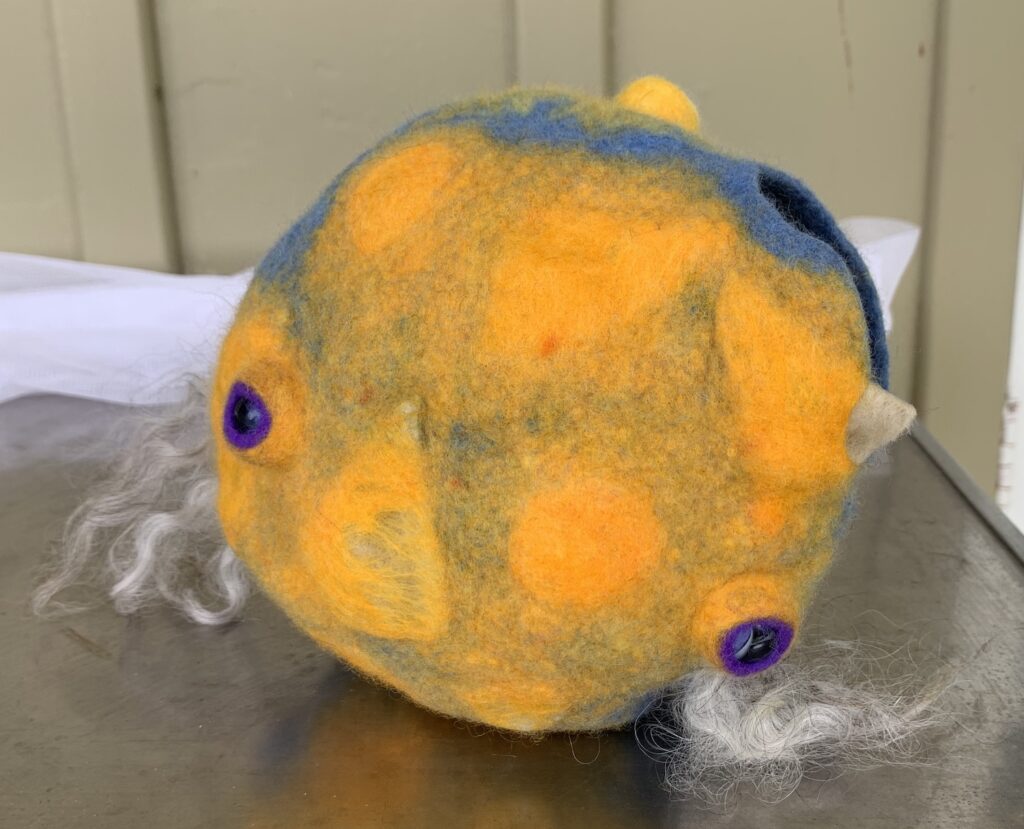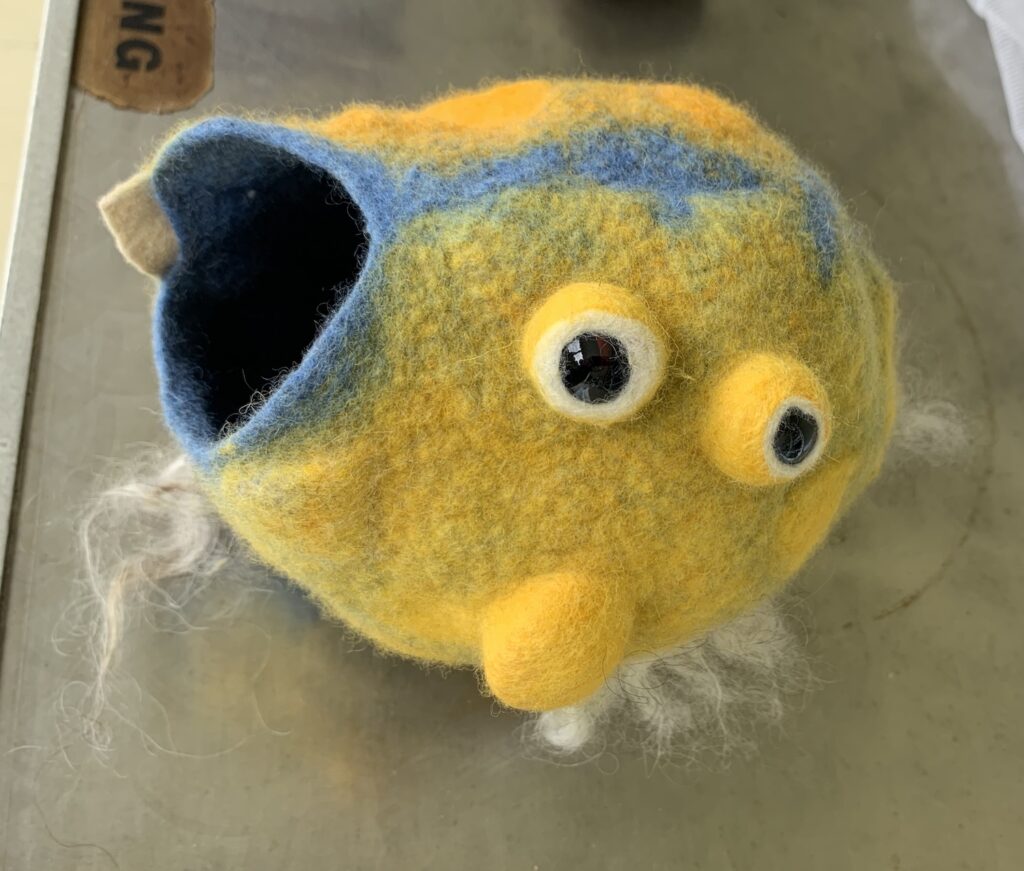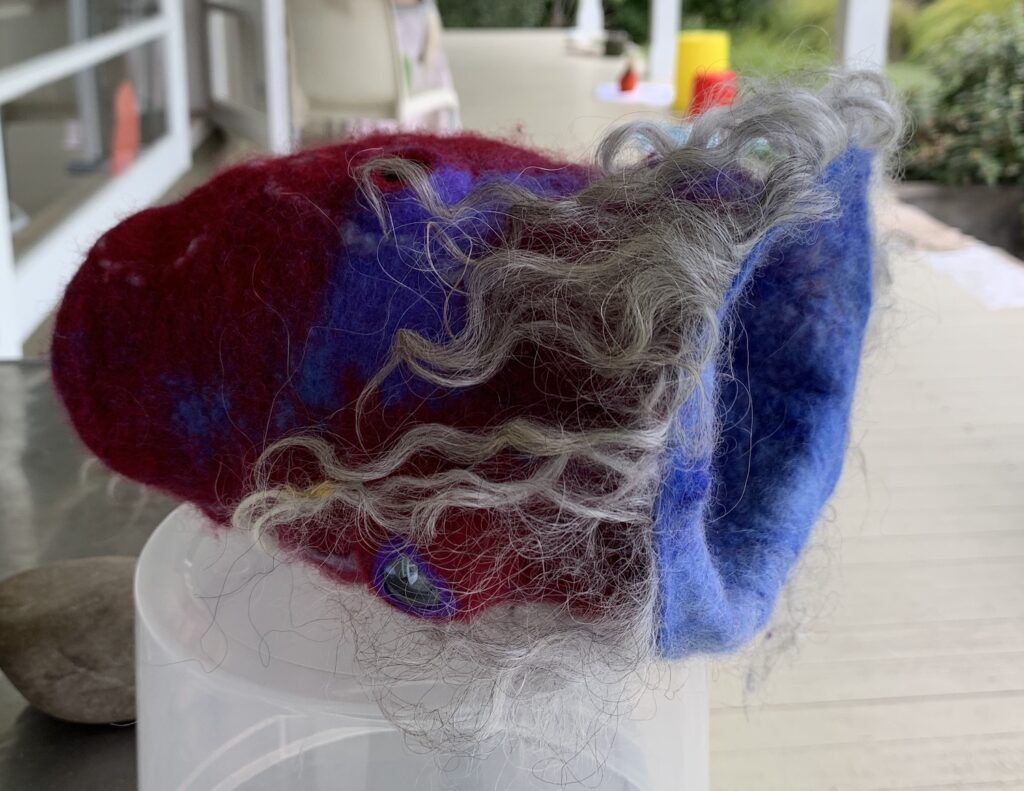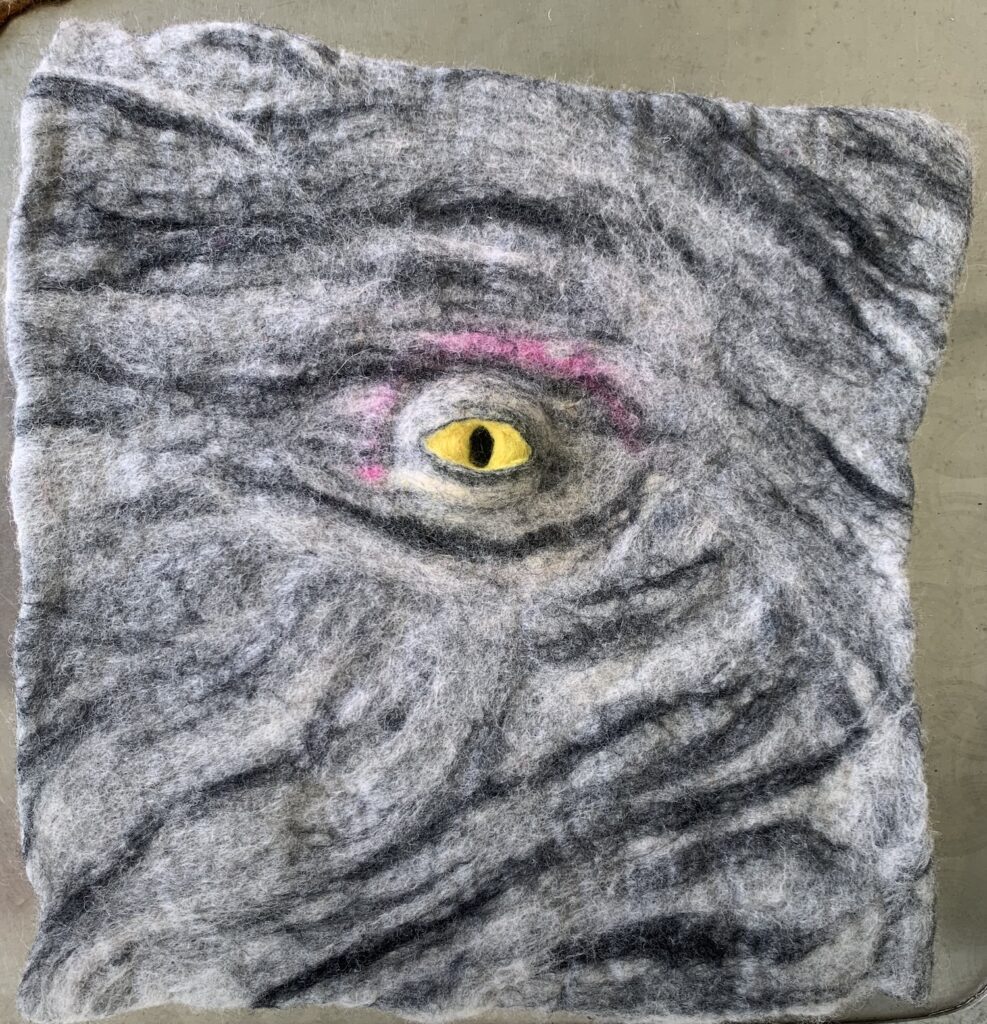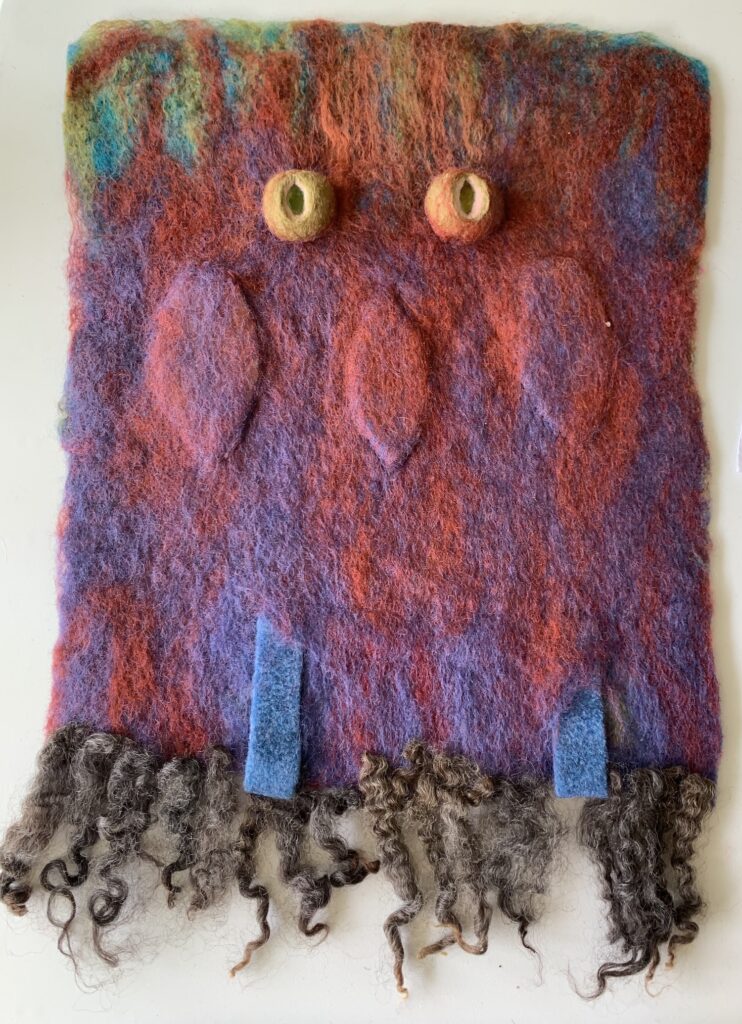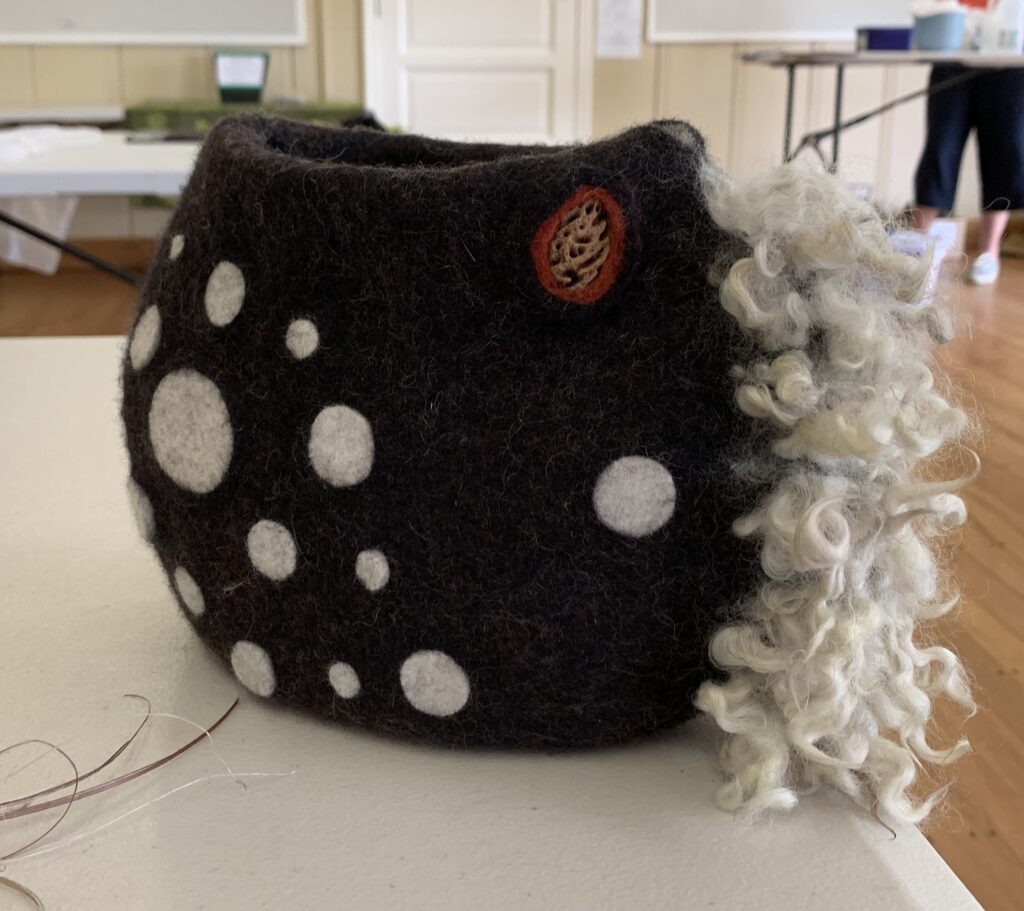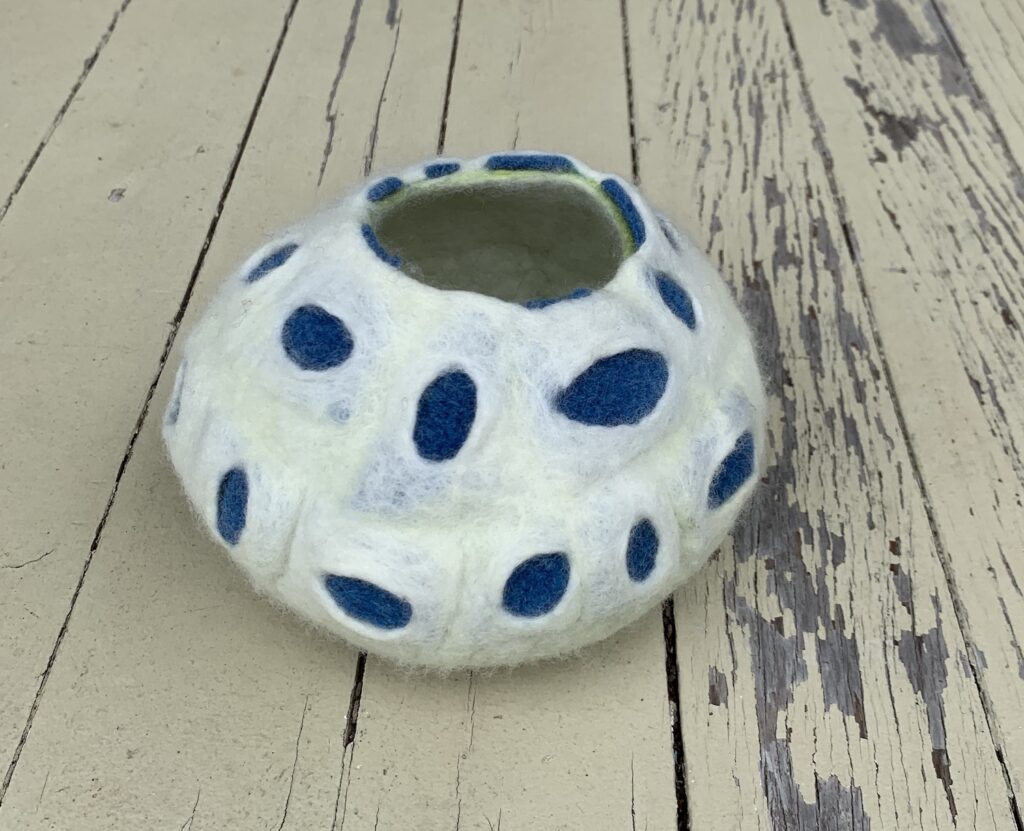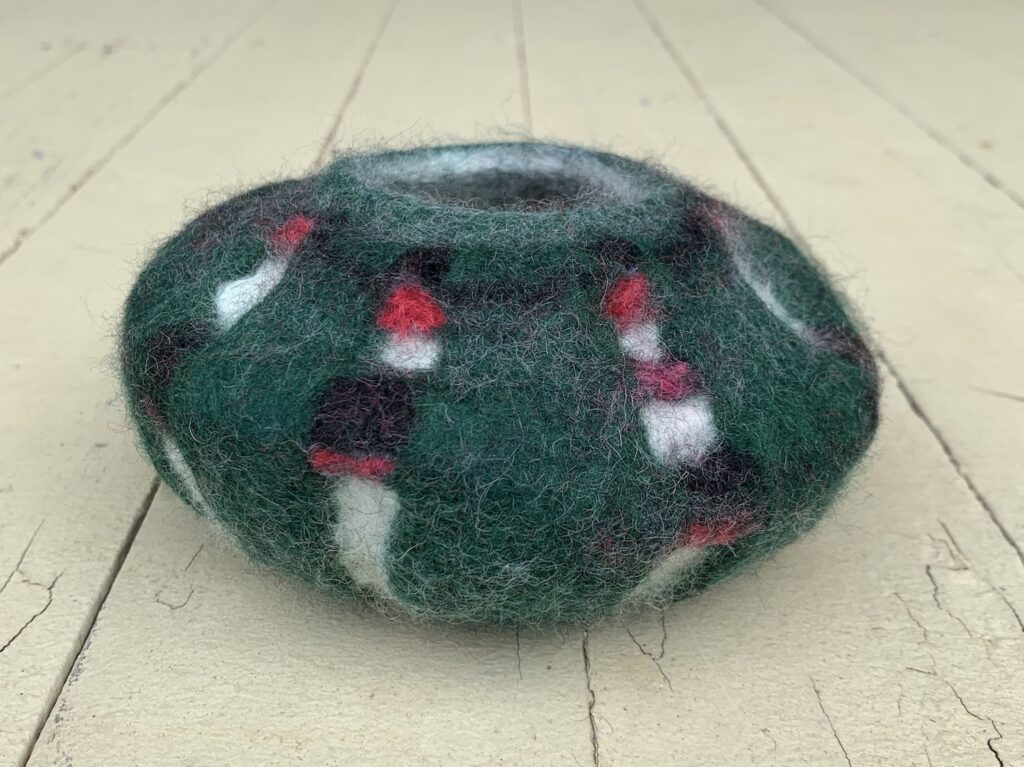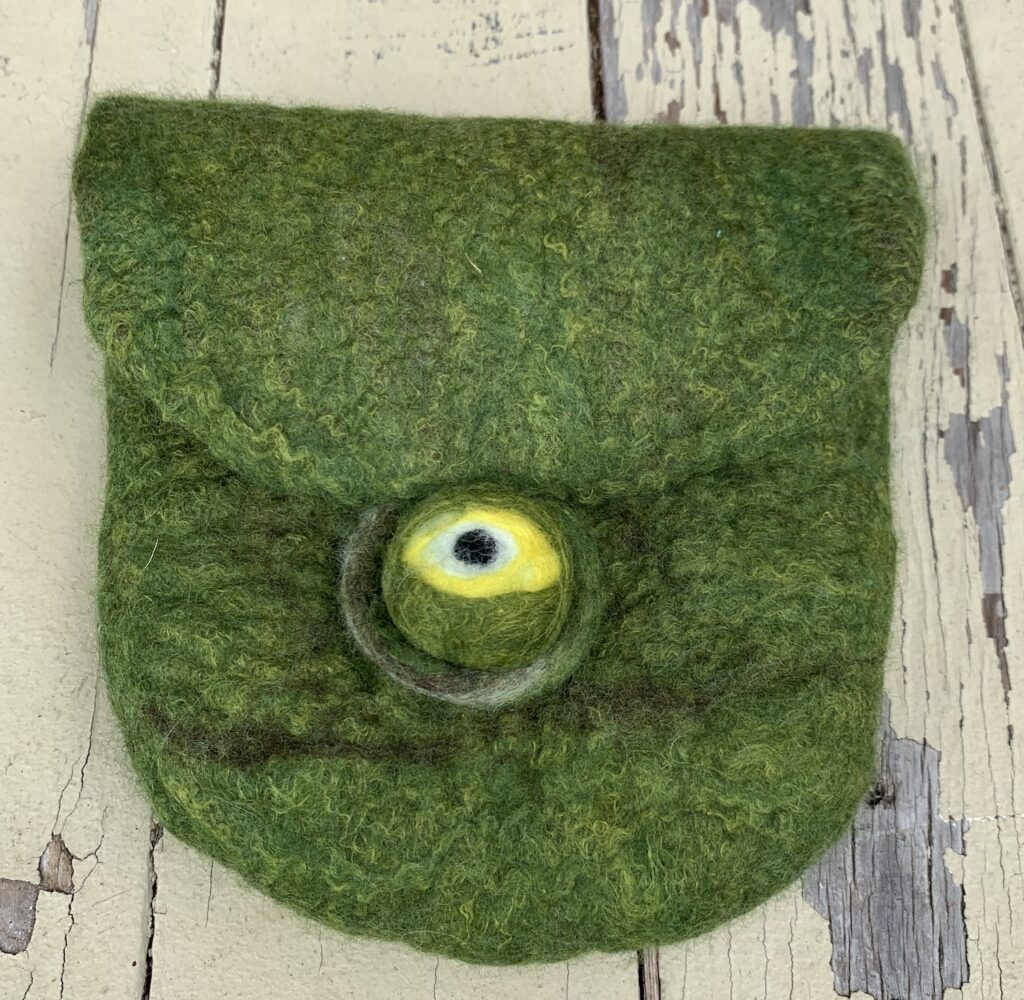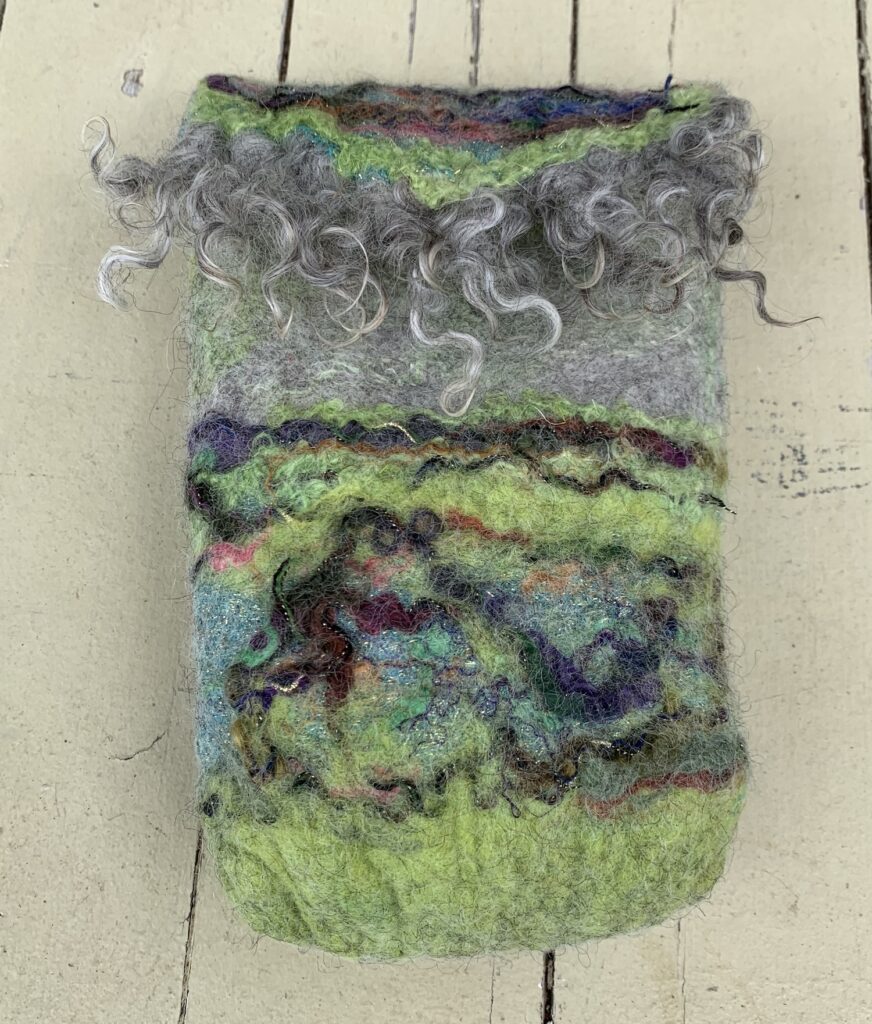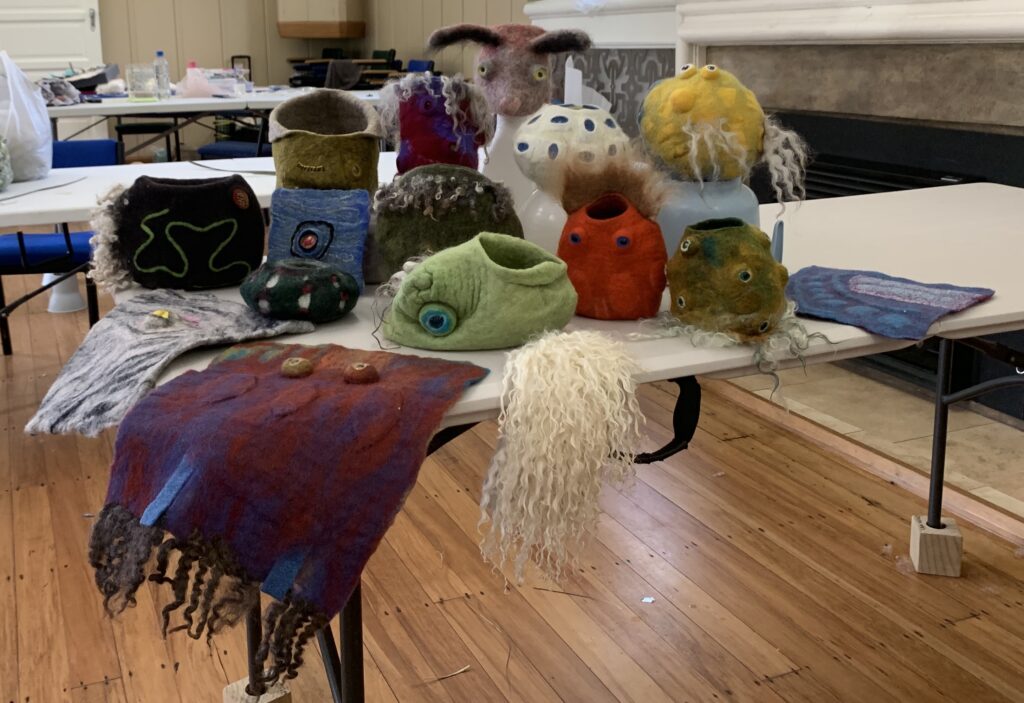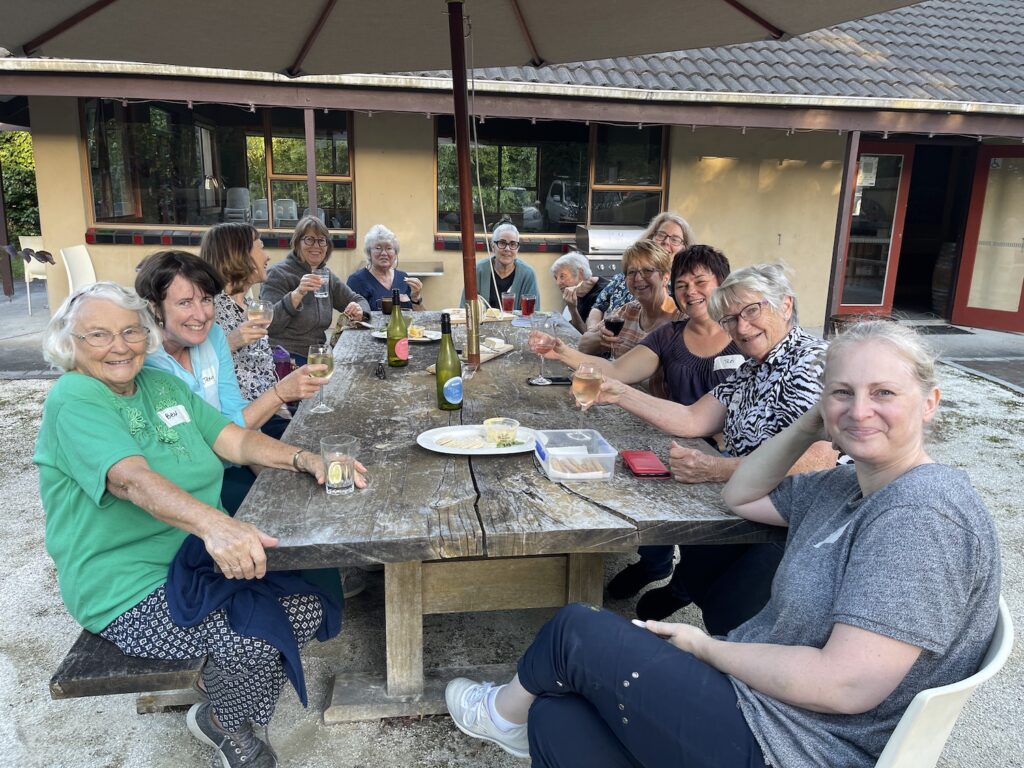It’s hard to believe but I started making this felted mailbox cover nearly 2 years ago. This is what it looked like in March 2023 before I started adding the gills and rhinophores (horns at the front) were added.
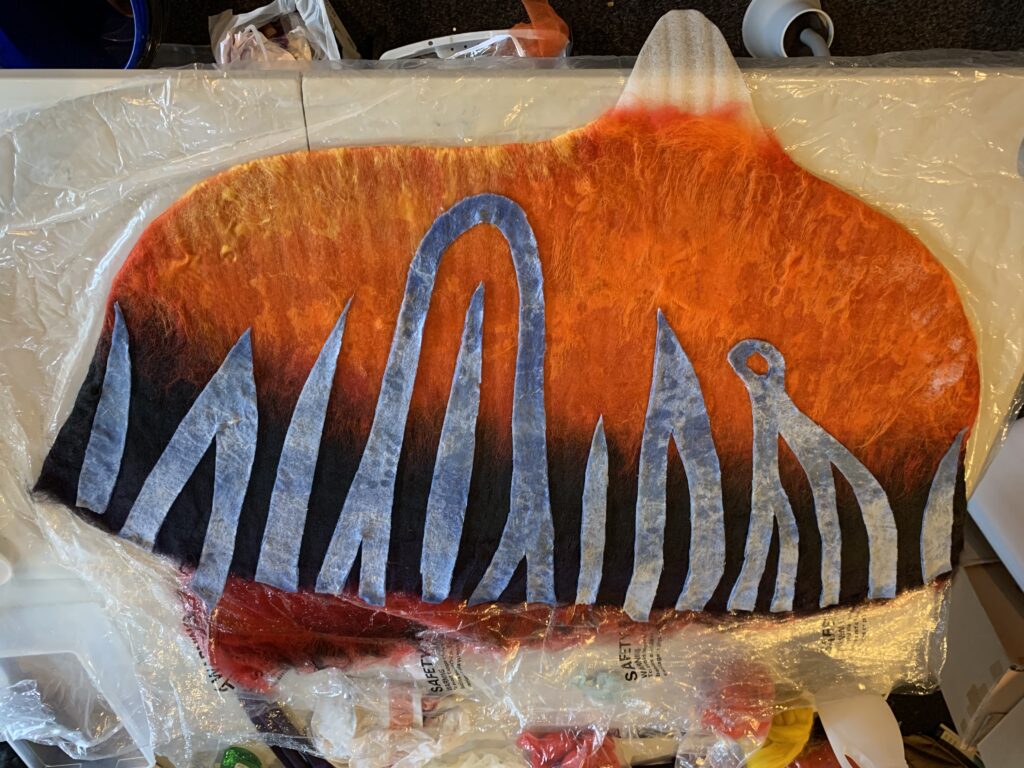
I took it to the Fun Felters retreat that March where we collectively stretched it over the commercial mailbox (I had fulled it too far so it took a LOT of pulling and stretching to get onto the box). It took 5 of us, all pulling on a different section to get it all the way on.
Sadly I was too busy fighting the damp nudi to take any photos but I am sure we must have looked sight 🙂
After working and shaping it I wasn’t happy with the rhinophores so I wrapped some garden wire around them and then Mr TB pointed out that they looked a lot like the red flag. Urgh, I hated to admit it but he was right, even with them pointed down they could still be mistaken for a flag by a short-sighted postie 🙁
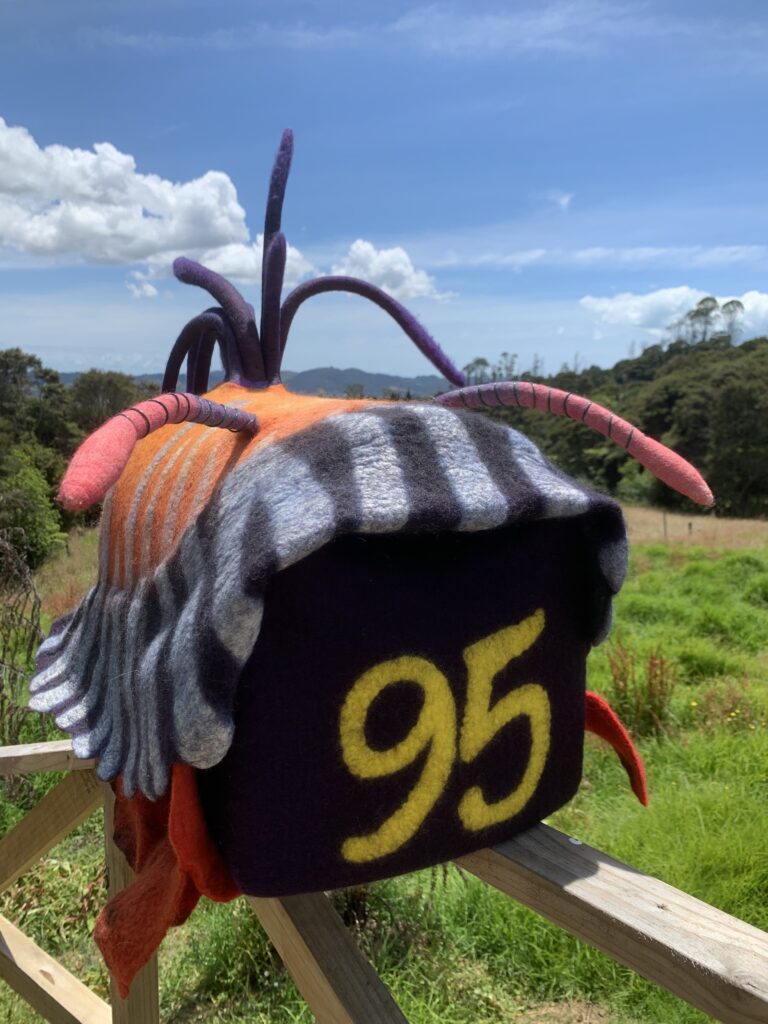
I already knew some surgery would be needed to make the flag accessible (it was trapped under the felt) so the rhinophores were amputated at the same time – ouch!
After the rhinophores were carefully removed (leaving nasty purple wounds) an incision was made over the flag. I love how you can clearly see the layers of wool and fabric across the cut edge.
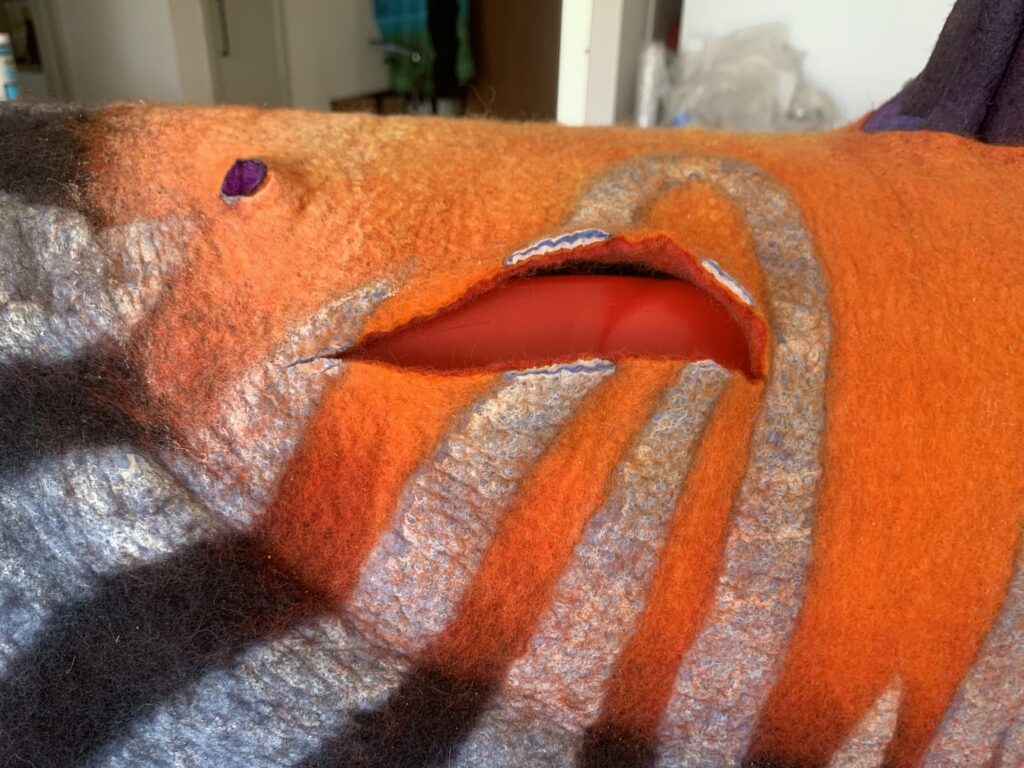
The flag was extracted and the wound closed with sutures…
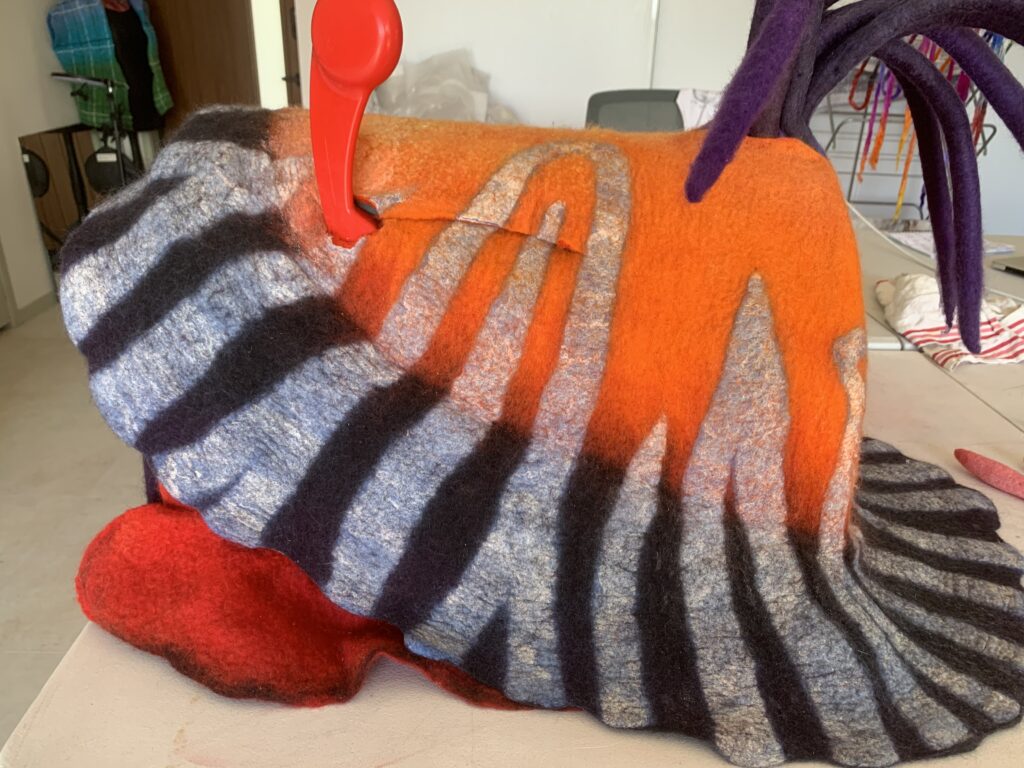
Before massaging to heal the wound and minimise scarring.
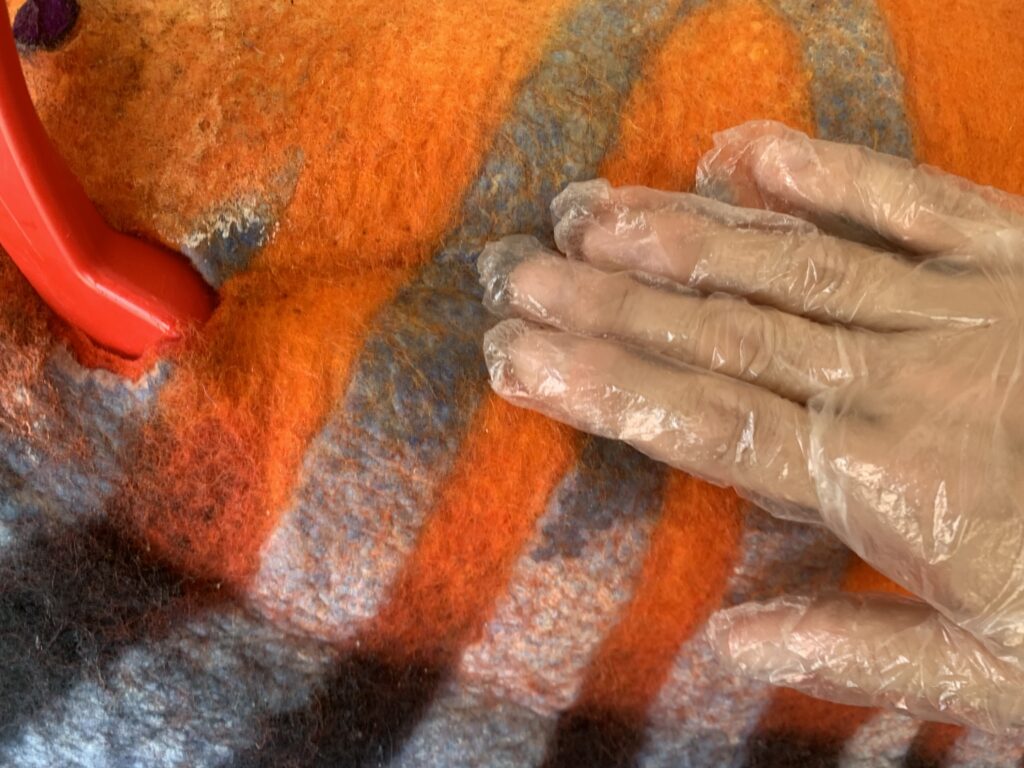
Here she is, fully recovered and drying in the Auckland sunshine 🙂 Waiting for a new post to be installed that she can perch on.
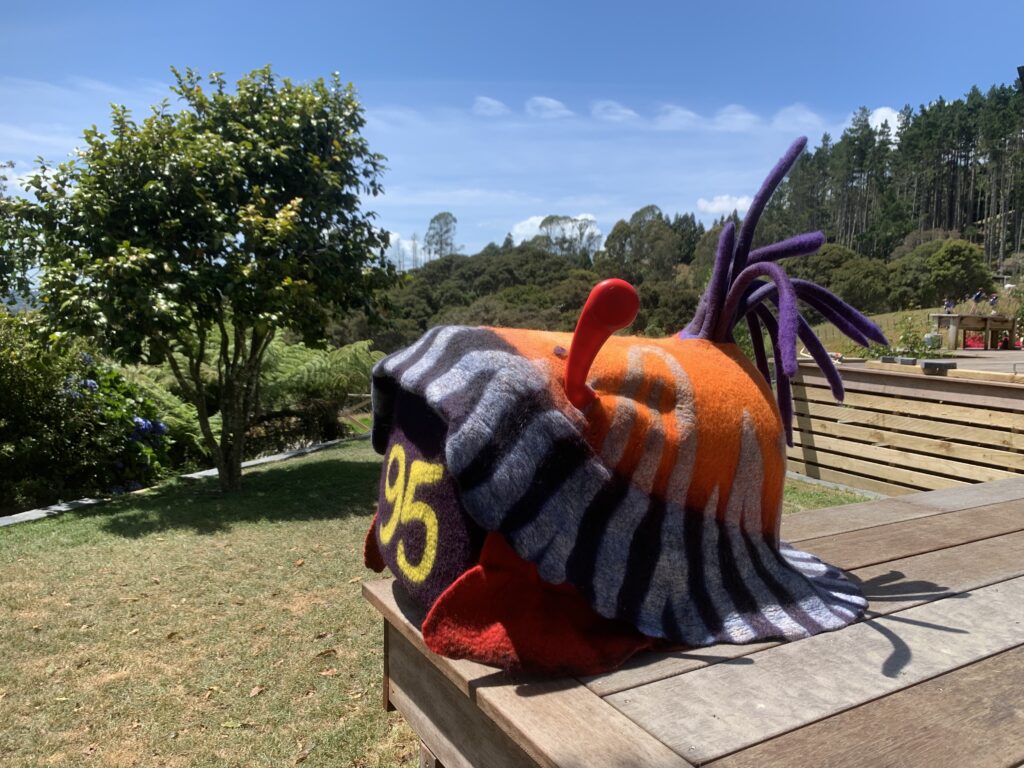
No animals, not even humans, were harmed in the making of this mail box 🙂

